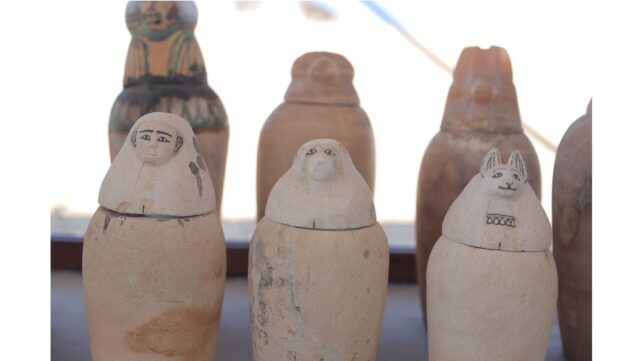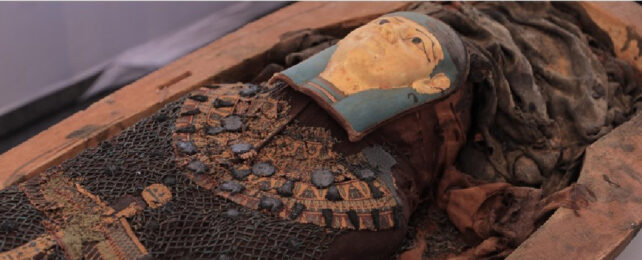Archaeologists excavating a 3,500-year-old cemetery have discovered an ancient Egyptian "Book of the Dead" filled with spells to guide the deceased in the afterlife.
The scroll, which was revealed as part of a presentation of the latest archaeological finds from the Tuna al-Gebel cemetery in central Egypt, is estimated to be 43 to 49 feet long.
Such scrolls were a common component of burials in ancient Egypt, and their incantations were a form of supernatural "travel insurance", according to Sara Cole, an assistant curator in the Antiquities Department at the J. Paul Getty Museum, speaking to The New York Times.
An early examination of the scroll found in Tuna al-Gebel revealed a mention of the "Book of the Dead," the Egyptian Ministry of Tourism and Antiquities said in a statement on October 15 translated from Arabic.
The scroll was not the only treasure found at the site, which was established during the New Kingdom dating back to circa 1550 to 1070 BCE.
Archaeologists found mummies, thought to belong to high-ranking officials, some of which were still in their ornate stone sarcophagi in good state of preservation, per Live Science.
This includes the mummy of Ta-de-Isa, the daughter of a high priest, Live Science reported.
The find also uncovered rare canopic jars made of alabaster, used to store spiritually important organs during mummification, and "thousands" of amulets, per the statement.

Finding a copy of the "Book of the Dead" is not that uncommon. But it is "very rare" to find one still in the grave where it was buried, Foy Scalf, an Egyptologist at the University of Chicago, told Live Science in an email.
Scalf noted, however, that not much information has been released about the scroll, and it is difficult to know just how important it is without further scrutiny.
Lara Weiss, an expert on the "Book of the Dead" and CEO of the Roemer and Pelizaeus Museum in Germany, told Live Science that "if it's that long and well-preserved [then it's] certainly a great and interesting find."
The journey to the afterlife was thought to be quite difficult, and this set of instructions, placed with the deceased in the grave, was meant to help the spirit find its way there, John Taylor, the British Museum's Curator of Ancient Egypt and Sudan, said in a blog post in 2010.
These were quite pricey as you had to write your name into the scroll for it to work. Some were written from a template so that the name of the deceased could be added in a blank space. But the wealthiest could pick which spells they wanted to include, making these scrolls unique.
This article was originally published by Business Insider.
More from Business Insider: